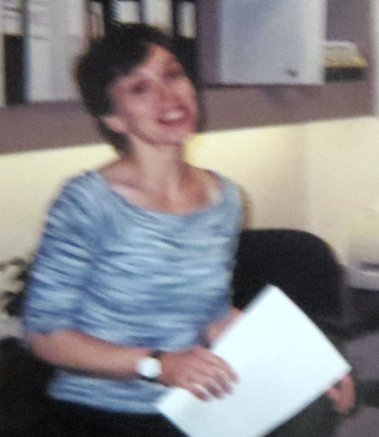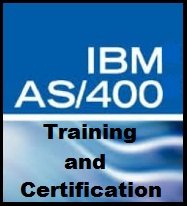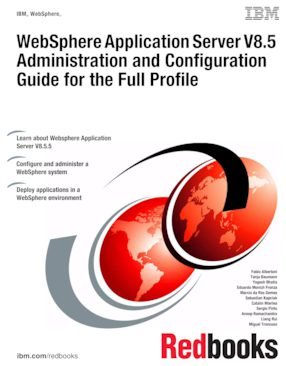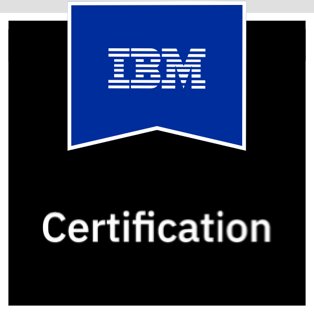Our attempt to hire René Conrad. Continue reading
In the second half of 1999. after my sister Jamie Lisella had left TSI (explained here), the situation at the company was simultaneously the most exciting and the most perilous of its entire experience. On the one hand, business was very good; our services were much in demand, and the relationship problems of the previous few years were pretty much behind us. We had a good staff that could produce great code on a reasonable schedule. We also had plans to move into a new office in East Windsor that we were designing to fit our needs (described here).
However, the company did face some serious issues.
- TSI had no marketing director, and we had done no marketing of any note for at least a year.
- TSI no longer had an administrative assistant. I had take over these tasks, and I had better things to do.
- The size of the potential market for new sales of our primary product, AdDept, an administrative system for retailers, was dwindling, mostly do to mergers and consolidations in the retail industry. Another factor was the fact that AdDept was already installed in a large number of locations.
- The computer that we knew best, the AS/400, had limitations that made it difficult to sell to companies that were not familiar with it. Specifically, the screens and output were not considered “modern”.
- The Internet posed a serious challenge. At the end of the century every business could see aspects of the opportunities that it offered, but few could see a clear pathway to using it profitably.
My partner, Denise Bessette, and I discussed these issues fairly often. We knew that we were understaffed in critical areas. Although a good case could be made for getting a new marketing director forthwith, the previous marketing person, Doug Pease, had left the company a few years earlier because I asked him to stop selling new AdDept systems for the simple reason that our existing clients were so demanding that we were struggling to keep up with their requests for new programming. It seemed to me that we should address our other problems before we hired someone to generate more sales.
I was aware that René Conrad was frustrated with her position as planning manager at Kaufmann’s in Pittsburgh (introduced here). I had great respect for René and her work. In the wake of Jamie’s departure I discussed with Denise the possibility of asking René to work for TSI. Denise was receptive to the idea, but there certainly were a lot of detail that needed to be put in order.
After talking with René over the phone a few times in August of 1999 I sent the following letter to her:
I have been thinking a lot about this. I also met with Denise. As usual, she had some good ideas. It seems to me that there are three things we need to address: 1) a job description that we all can live with; 2) a solution to the relocation problem; 3) a suitable compensation scheme. You may have other issues, too. If you do, I would greatly appreciate it if you would tell me as soon as possible.
1) Job description
You asked me if this was Doug’s job. The answer is no. We hired Doug to sell AdDept systems. We hoped he would be able to do other things, but the only other one that he was accomplished at was setting up time and action plans and agendas. In the last five years we have taken an immature product with a small client base and made it into a comprehensive administrative system used by a large portion of the most powerful and successful retailers in America. What we really need now is someone with insider knowledge to help us shape our company for the next 10-15 years. This is the primary role we would like you to pay. We realize full well that this is much less structured than what you are used to. We hope you would look forward to the challenge and can adjust to this type of environment. The second most important objective would be to relieve some time pressure from Denise and me. I hope that you would be able to relieve me of some of the training time either by eliminating the need for it by improving our documentation or by taking some of the trips yourself. The other side of the coin is that neither Denise nor I can afford to take on new unbillable responsibilities. The case in point is supervision of the administrative assistant. Jamie did this work for such a long time that she required very little oversight. I don’t see how we could afford to hire you if you did not supervise this person. I don’t see how this job can be performed from anywhere except our office, certainly for the next few months. You will have an awful lot to learn about how our company works. You know all about Kaufmann’s and a little about the other May divisions, but we have 17 other clients. We work very closely together at TSI. I don’t see how this could be done by phone. We also do not have the infrastructure for remote use of our system. We have a dial-up connection through the network, but it uses phone lines.1 We would spend a fortune on long distance if someone had to dial in to our system, and, of course, that is the only way to dial in to our customers. Setting up an internet connection is expensive, and we would probably have to hire someone to do it. It also drags security issues in as well.
2) Relocation
I don’t exactly know how to sell you on Connecticut. Our new office promises to be very nice. You will have the biggest office with three windows. We will make sure that you have whatever you need to be productive. I have made a commitment to everyone to make the work environment so nice that people will love to come to work.
As I said, we have no death marches.
I think you will like working with our staff. If there was any negative feeling in our office, it left with Jamie. We are in the process of hiring an administrative assistant.2 If you don’t like the person we hire, you can get someone else.
The area is pretty nice. The weather is certainly no worse than Pittsburgh’s.
We are two hours from Boston, which is full of activity. We are only three hours from New York by train. Vermont is only 1.5 hours. The long island shore is an hour or so.
You will have to make new friends. That is never easy.
We would REALLY like you to come see what we have to offer. Denise is eager to show you Northampton, MA (about 20 minutes north), where she went to school.
3) Compensation
I am pretty confident that the compensation issue can be worked out without much difficulty. I told you about how much Doug had been making. I neglected to tell you that 2/3 of that was in commissions. I think that we need to revamp the compensation scheme somewhat. Doug concentrated on new AdDept sales. It took him a few years, but eventually his efforts outstripped our ability to support the new customers. I get the distinct impression that you aren’t interested in that kind of job. We want to sell AdDept systems, but we think we need to develop other sources of income as well.
We propose that you receive 35% of the profit on hardware sales; 10% of the revenue on AdDept sales (assuming I take all the sales trips by myself); 20% of AdDept module (e.g., CAPS interface) sales; and 50% of “project management” income. The last would be defined as any trips (at $900 a day) that you get customers to agree to let you take. If you can persuade them to pay you without taking a trip, all the better.
You will be part of the process of developing new products or services. We will negotiate with you what percentage you get.
The starting base salary would be $50,000. e will agree to pay you an additional $2,000 per month as salary in lieu of commissions for the first twelve months. If your commissions were $500, $4,000, $800, and $3,000 in the first four months, you would be paid $2,000, $2,500, $1,500, and $2,300.
We have done no marketing in more than two years. Nevertheless, in the next year I think that one AdDept sale is almost certain (Carson’s)3 and one is likely (Dick’s)4. It is possible that Dick’s will happen very soon, in which case I will have to pay Jamie commissions. There are two almost certain hardware sales (Carson’s and a box for Saks Inc.). At least three or four customers could definitely use faster boxes, and the new 170’s are very attractive.
Adapting to life in a small company will not be easy for you. On the other hand, I think that the profiles of TSI and René Conrad mesh well. We are stable, free of debt, and full of kindred spirits. We need a smart, aggressive, well-connected person. You’re it.
Have you seen the W.C. Fields movie, “The Bank Dick”5? Fields’ character Edgar Soucè (accent grave on the last syllable) has a prospective son-in-law named Og Oggleby who works in a bank. Fields is trying to talk him into embezzling money to invest in shares of stock in The Beefsteak Mine. The pitch is “You’ve got to take a chance when you’re young.” Soucè explains, “My uncle Huffnagle, a balloon ascentionist, took a chance. While he was aloft in his balloon one day, he espied a haystack 2,000 feet below him He took a chance. He jumped out of the balloon and aimed his flight at the haystack.”
“Gosh,” says Og. “Did he survive?”“Uh, no,” says Soucè. “But that’s the point. If he’d been a younger man, he might have. You’ve got to take a chance when you’re young.”
We contacted René, and arranged for her to fly to Connecticut and spend some time talking with us in our new office. We bought a round-trip plane ticket for her and arranged for her to stay at the nearby hotel, which was, I think, a Best Western at the time.
I picked up René at Bradley on, I think, a Saturday morning in December 1999 or January 2000. Denise drove in from her house in Stafford. We tried to explain that the situation at TSI was very positive, but we wanted to hire someone who could help us face the issues of the twentieth century. René’s biggest concerns were the fact that she was used to fixed goals and rewards for meeting them and whether her presence would be required in Connecticut. Unbeknownst to me she had strong ties to Pittsburgh and was not impressed by the social scene in the Hartford-Springfield area.
A few days before Denise and I left for our trip to PartnerWorld in San Diego I received a letter from René in which she declined our offer. It was disappointing but not surprising. When we got back from San Diego, I wrote up my thoughts for Denise’s consideration and then on February 7 I set this letter to René:
Denise and I were disappointed but not very surprised to receive your letter. I think that the three of us would have had an enjoyable and successful time working together, but there is more to life than work. At least, I think I read that somewhere.
We both gave careful consideration as to whether the job could be performed remotely. We also examined whether there was a feasible arrangement that involved two weeks here and two weeks there. The thing is that we want someone we can work closely with, and we just don’t see how that would be practical without the person being in the office. Denise and I often have impromptu conferences, and I think that the close sharing of ideas has helped the company immensely. Our primary objective is to find someone with slightly different experiences and a somewhat different outlook to join in the process.
We are still convinced that you would have been the best person for the job, but we accept that we now have to look elsewhere. We both look forward to working with you.
We did not get to work with her for long. In 2002 the May Company moved the administration of the Kaufmann’s stores to the headquarters of the Filene’s division. René began working with a local non-profit theatrical organization, about as different from TSI as imaginable.
TSI did not get to add Dick’s, which is also in Pittsburgh, to its client list until 2004. On a training trip I met up with René. She showed me where she worked, and we had supper together.
What if?: It is difficult to say how different things would have been if we had hired her. In the short term there might have been very positive results. I wrote on February 17, “It occurred to me in a fit of melancholy at 5 PM on Friday that René Conrad could probably have forestalled the Cato fiasco. She could also probably have taken the Meier & Frank trips, or at least one of them.”
On the other hand, she could not have helped us much with the May Co. It is almost impossible to imagine getting much more work from them. Perhaps she could have penetrated the barriers that Macy’s set up, and we could have continued our relationship with them after the grand consolidation. Even if she did, how would it have helped us.
I don’t think that she could have helped much with AxN. Denise came up with a great solution to the problem of marketing it to newspapers. I cannot imagine what René she could have figured out a way to use the connections we established between advertisers and newspapers for some other purpose that was valuable to one or the other.
While working on this project I contacted René through LinkedIn. Her page is here.
1. In 2023 it is strange to read about concern about telephone charges. At the time we used MCI for long distance. Every month our bill was in the thousands..A few years later our network and Internet connections made it feasible for employees to sign on to our AS/400 from home through a local carrier. In fact, one of our programmers, Michael Davis (introduced here), did this from Pittsburgh after changing from local employee to remote contractor. Denise worked from her home on Cape Cod during the last year of so of TSI’s existence.
2. The administrative assistant whom I hired was Nadine Holmes (Introduced here).
3. I can hardly believe that I was ever “almost certain” that TSI we would get Carson’s (introduced here as P.A.Bergner). Steve VeZain must have told me or Doug something that I later repressed.
4. The Dick’s Sporting Goods installation has been described here.
5. I planned to insert a link to this routine, which I consider the best comedy sketch ever, on the Internet, but I could not find it posted anywhere.







